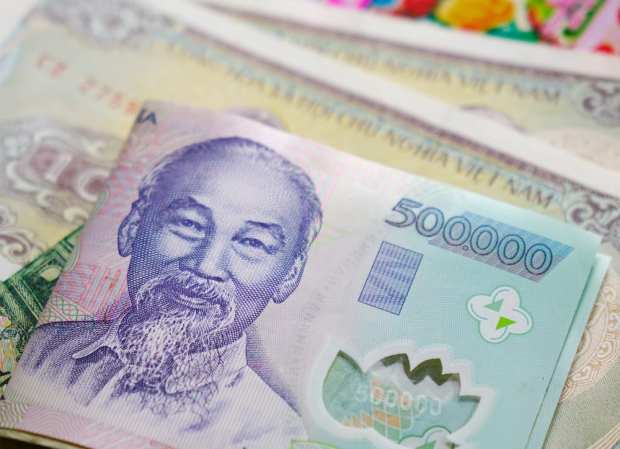Financing Vietnam’s Underbanked And High Risk Agri-SMBs

While a lack of access to affordable, quick capital is a barrier to growth for small businesses across the globe, there are certain markets and certain industries in which those hurdles are particularly high.
Developing markets are often characterized by a high volume of small and micro-businesses that are key to employment and GDP, yet with those firms lacking access to traditional bank services or financial literacy. Certain industries, meanwhile, can be particularly volatile and high-risk for banks to underwrite.
When these two barriers to capital combine, entrepreneurs can find them entirely insurmountable.
Such is often the case in Vietnam’s agriculture industry. In a nation where 97.6 percent of all businesses have fewer than 100 employees, small and medium-sized businesses (SMBs) are key to economic growth — yet a 2017 report from the International Finance Corporation discovered less than half of small businesses in the country had accessed a bank loan in the previous two years.
According to Nikhilesh Goel, co-founder of Validus Capital, Vietnam’s small business credit gap can be traced back to a few factors.
“Many small businesses in Vietnam lack the financial literacy, as well as the necessary collateral and credit records, to borrow from traditional lenders like banks,” he told PYMNTS. “In addition, as the FinTech lending landscape is still nascent in Vietnam, data availability can be a challenge and most SMBs aren’t aware of alternative lending options available.”
A Volatile Vertical
There is evidence that Vietnam’s FinTech ecosystem is advancing quickly as digital payments and commerce permeate the market with a trajectory similar to that of China’s, some analysts say. While digitization will support lenders’ ability to underwrite loans, not all small businesses are able to accelerate their digital transformations equally.
In the agriculture and food sector, for example, certain factors add extra friction to small businesses seeking capital.
“As these small businesses lack formal financial statements, business records and collaterals, they are often unable to obtain funding from banks,” Goel explained. “Small business owners like farmers are unable to fund their growth or operational expenses to purchase items like seeds and farming equipment, resulting in the lack of crop yield and revenue for these small businesses.”
It’s a self-perpetuating pattern that locks many agri-food SMBs into a spiral of a cash flow squeeze: without collateral like machinery, small businesses in the industry struggle to access the finance they need to procure such machinery. And without access to capital, these businesses aren’t able to strengthen their crop yield, resulting in an even riskier profile for skeptical banks.
“Traditional lenders such as banks rely on credit history and records when making credit decisions, and often require collateral in the form of machinery or owned real-estate — which small businesses in the agri-food industry are rarely, if ever, able to provide,” Goel said, pointing to additional industry-specific factors limiting these businesses’ access to bank loans. “Other risks include volatile commodity prices, bad weather conditions or disease outbreak that could impact the industry and agri-businesses’ repayment periods.”
Catching Up With Market Growth
Vietnam’s agriculture industry is enjoying a bit of a boom, with the nation’s Ministry of Agriculture and Rural Development reporting in 2018 that the sector’s GDP contribution increased by 3.76 percent, reaching its highest level in seven years and yielding more than $40 billion in export revenues.
Despite this growth, Goel warned that small businesses in this industry face cash flow pain points like late payments that make it even more imperative for them to be able to access affordable and quick financing.
There is significant opportunity for FinTech to step into the fold, with Goel pointing to advances in data analytics as a key component to strengthening underwriting and business analytics operations. While automation and technology can support both alternative and traditional lenders’ efforts to address the credit gap among Vietnam’s small agri-food businesses, traditional lenders often view the low-value and short-tenure loans that SMBs seek as unprofitable, presenting an even greater opportunity for alt-lending companies to collaborate and address friction for both banks and borrowers.
This is particularly true not only in areas of small business lending like underwriting, but in the post-finance experience of loan monitoring.
While small businesses in Vietnam value personal relationships with bankers, Goel said artificial intelligence (AI) presents the opportunity for lenders to better assess macroeconomic trends and borrowers’ financial positions to anticipate potential repayment problems. It’s a strategy enabling lenders to become proactive at mitigating risk, while also presenting a way for lenders to encourage repayment and promote loyalty to deepen the bank-small business relationship.
“Financial institutions have a lot on their plate: emerging competitors, shifting demographics, rising customer expectations and changing regulations,” said Goel. “Advancements in digital experiences, such as AI and distributed ledger technology, are catalysts to new FinTech services.”
